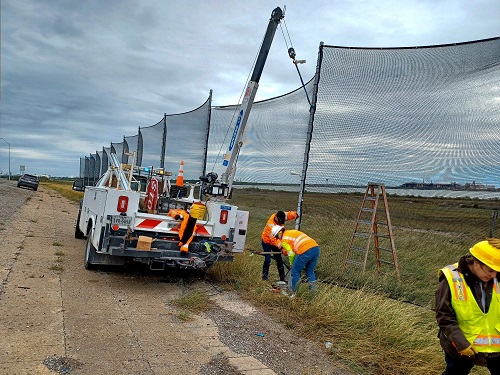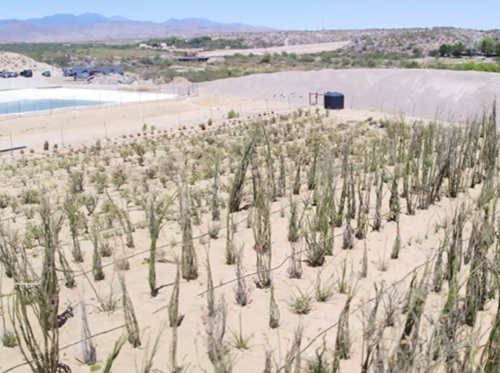In part one of this article, John Maresh – a biologist and environmental specialist for the Texas Department of Transportation – related how a drive along Interstate 10 during Monarch Butterfly migration season got him thinking about ways to protect the winged creatures when traversing state roadways.
[Above photo by TxDOT]
That is not a just an academic concern, either. Not only are Monarchs and other butterflies critical to plant pollination, a federal research project may soon list them as an endangered species.
In December, the U.S. Fish and Wildlife Service is expected to release a status assessment that could list the Monarch as an endangered species. And that designation under the Endangered Species Act or ESA could have serious environmental consequences for all transportation projects that rely on federal funds.
“When any species is protected under the ESA, the protections are fairly strong,” Maresh said. “You can’t kill or harm or harass them, and when you disturb their habitat, you have to consider that, too.”
However, he explained that it is in state DOTs’ interests to take “conservation measures or other actions that would stabilize or reverse population declines and make more stringent ESA protections unnecessary.”

That’s why Maresh’s roadway curiosity could pay dividends. He helped lead TxDOT-sponsored research on how to protect the migrating Monarchs; work that culminated in a two-year trial project, from 2023 to 2024, to see if large roadside nets in strategic locations can encourage the Monarchs to fly above traffic.
The nets, called diverters, look like roadside netting next to golf courses or baseball fields, but shorter. The vertical diverters are anchored by poles about 10 meters apart and strung side-by-side for 100-meter stretches.
TxDOT set up two diverter locations – one in Crockett County along I-10 in West Texas, and the other next to the Lavaca Bay Causeway in Point Comfort, about 120 miles southwest of Houston. TxDOT installed the diverters in early October in 2023 and 2024 and takes them down when the migration ends in mid-November.
Scientists know the Monarch population is declining because they count the butterflies in Central Mexico each year by measuring how many hectares in the forests the butterflies occupy (one hectare equals 2.47 acres). In 2023, the space dropped nearly 60 percent from 2022 to just under one hectare, which translates to about 20-30 million Monarchs.
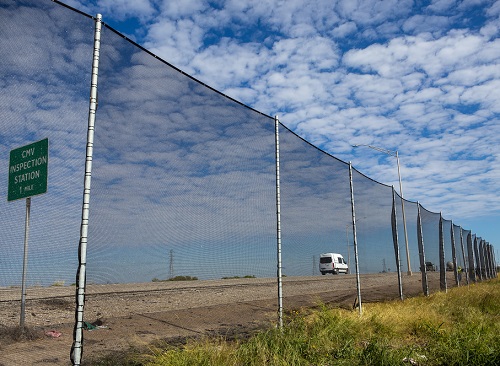
For comparison, the Monarchs took up more than six hectares in 2019 and more than 18 hectares in 1997. That translates to about 360 million to 540 million insects.
Maresh said research from Texas A&M University shows that anywhere from 1 percent to 5 percent of the Monarch population may end up on a vehicle windshield or front grill.
TxDOT’s method of determining how many butterflies the diverters saved is to “walk and count dead butterflies where the net is and where the net isn’t, and see if there’s a discernible difference,” Maresh said.
The 2023 migration to Central Mexico was very low, and that was reflected in the Texas diverter counts, Maresh said. “There were very few (butterflies) moving, and there really weren’t enough data points,” he noted. “They didn’t have a high enough number of roadkill either where the nets were or where they weren’t to have anything to say about it. The roadkill was very low.”
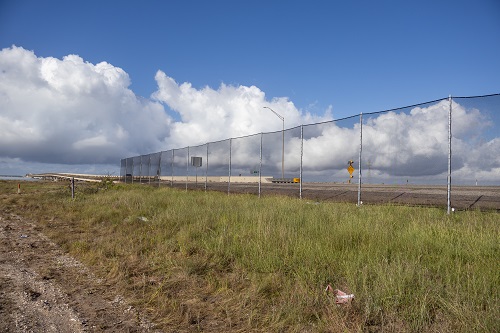
However, initial reports from the diverter sites indicate the 2024 migration is higher than last year, and more Monarchs have been sighted flying over the diverters, Maresh said.
“It does seem to be working…exactly as designed,” he said. “The butterfly is encountering the netting, raising up, maintaining their height, and flying over the roadway.”
So, will there be more diverters in TxDOT’s future? Maresh said it’s hard to say before all the data points are collected and studied.
“It’s to be determined,” he noted. “Does the data show it’s worth doing? Is it worth implementing on a wider scale? Is it worth doing more research?”
Even if the project is expanded, Texas roadside diverters alone won’t keep the iconic orange-and-black Monarchs from landing on the endangered list, he said. But it could be one piece of a comprehensive plan involving multiple agencies, groups, and individuals around the country.
“Owing to the complex ecology and widespread distribution of the Monarch, it is unlikely any single action could reverse the declines,” he said. “It would require collective action throughout the range and throughout the year.”
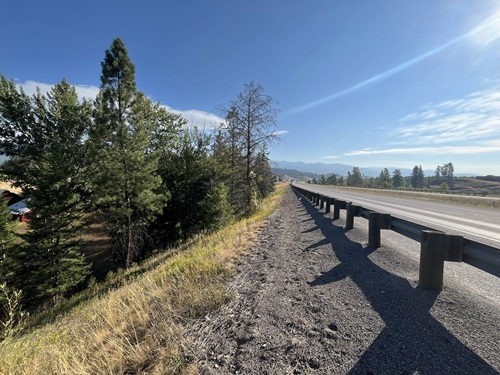 Wildlife and Ecosystems
Wildlife and Ecosystems

